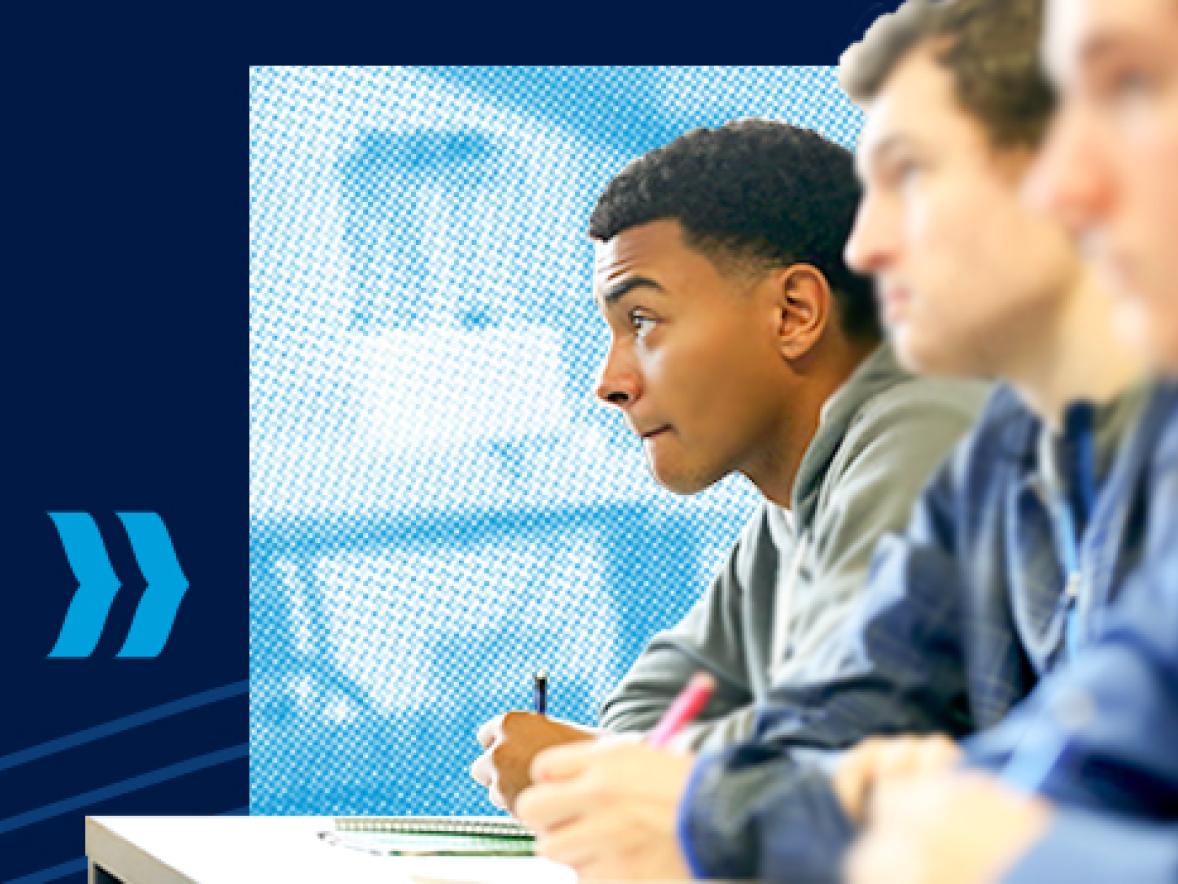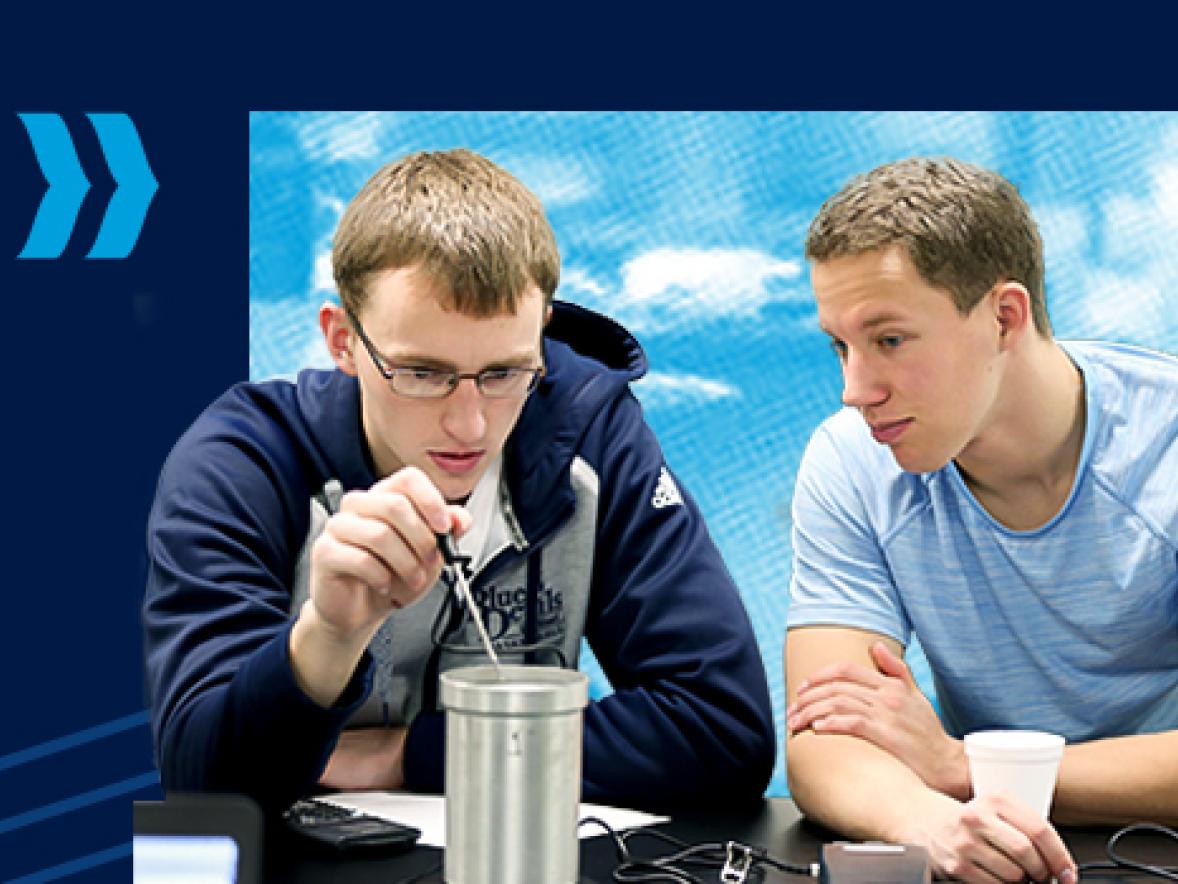Simple plywood boxes, Plexiglass glued together and even hot pink duct tape became the materials to create robots at a University of Wisconsin-Stout class as students cheered each other on and competed for the bragging rights of having their bot survive in the competition ring.
Students in Kevin Dietsche’s Mechatronics class built and programmed the sumo bots and competed on Dec. 2 in a 3-foot diameter elevated ring. Bots that became disabled or were pushed out of the circle lost.
Sixteen students built eight robots for the competition. The bots had to weigh less than 5 pounds, have an 8-inch by 8-inch footprint and have an offensive or defensive mechanism. Students also decorated the bots.
Incorporating STEM, STEAM
Building the robots incorporates the science, technology, engineering, manufacturing and art skills students have developed while at UW-Stout, said Dietsche, an assistant professor in the engineering and technology department.
“They learn teamwork, how to plan and problem solve,” Dietsche said. “They have to figure out what went wrong with a bot and how to fix it. You walk in here and the students are working on the bots. It’s electrifying. The applied learning, the engagement, the spirit of competition is just fun, but it picks up the learning objective with it.

“It really is a dumpster dive project,” he added. “I give them the hardware. They have to come up with how to meet the process on their own.”
The students, many of whom will become teachers, can make the bot project part of their future curriculums.
Technology education major Trevin Nelson, a senior from Tomah, and Brent Heilman, a senior engineering technology major from West Salem, created the Ripper, a bot with a 7 ½-inch handheld skill saw blade as its weapon.
The team focused on offense, thinking their competitors would be focusing on defensive measures.
Nelson said the class has been one of his favorites at UW-Stout. “I’m applying what I have learned using my skills and building a project,” he noted.
Heilman agreed. “I like how creative it is. We are designing, building and modifying it and you get to create a look you really want.”
At the competition, a bot named Rolling Stone took on Gary, a bot with big plastic eyes and a duct tape smile.
The bots seemed fairly matched until Gary moved to attack the other bot and suddenly shot out of the competition ring.
Creators Trisha Haugen, a junior technology education major from Roseville, Minn., and Ross Wegner, a senior technology education major from Kimberly, quickly started adjusting the weights on Gary to make it more stable.
Wegner said he named the robot Gary because it was the first name that he thought of.
Learning collaboration
Haugen said she enjoys the class because it mixes mechanical and electronic systems. “It’s fun. It’s definitely challenging,” she said. “It is competitive, but we are being collaborative and learning teamwork.”
Wegner agreed. “It is learning but it doesn’t feel like learning, in a positive way.”
During the competition, wheels fell off, bits of bots flew behind a plastic protective screening and some robots just stopped moving as their batteries died or they lost communication with the controls. At breaks to prepare for the next battle, students grabbed duct tape and glue guns to make repairs.

Many of the students used computers to control their bots. Jimmy’s Robot, named for one of the designers, Jimmy Schultz, a senior technology education major from Blue Mounds in Dane County, used an Xbox gaming system controller.
“I just wanted it to be different,” Schultz said. “I have more mobility. I don’t have to carry around a laptop. I can move around and get the best site advantage of the ring.”
The bot was made from green Plexiglass that the team got free, said Alec Kokko-Ludemann, a junior technology education major from Oconto Falls.
Schultz said if the team could redesign the bot, it would have added another set of wheels for more traction and a stronger weapon bar.
Team member Ben Wendland, a senior technology education major from Cashton, said he enjoyed the project.
“It was fun having teammates with different ideas and working together,” Wendland said. “I like the troubleshooting part when it is falling apart and getting it started again. That is fun.”
Barb Bauer, program director and instructor of technology education, and Provost Glendali Rodriguez attended event.
“I just really enjoy that they get to have this applied learning,” Bauer said. “They can take it to schools where they will be teaching.”
UW-Stout offers a Bachelor of Science in technology education, packaging and engineering technology. The university also offers bachelor degrees in computer and electrical engineering, manufacturing engineering, mechanical engineering and plastics engineering.





